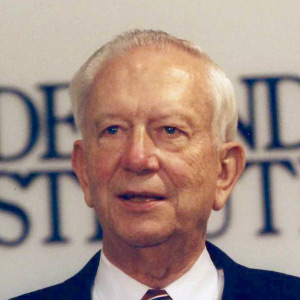As we remember the roughly 2,400 persons killed in the Japanese attack at Pearl Harbor—the worst one-day loss of American lives prior to Sept. 11th of this year—recently declassified U.S. military documents authored more than 60 years ago compel us to revisit some troubling questions.
At issue is American knowledge of Japanese military plans to attack Hawaii prior to Dec. 7, 1941. The first question is whether President Franklin D. Roosevelt and his top military chieftains provoked Japan into an “overt act of war.” The second question is whether Japan’s military plans were obtained in advance by the U.S. but concealed from the Hawaiian military commanders, Admiral Husband E. Kimmel and Lieutenant General Walter Short. Both Kimmel and Short were relieved of their commands, blamed for failing to ward off the attack, and demoted in rank after the Japanese raid.
The latter question was answered in the affirmative last year on October 30, 2000, when President Bill Clinton signed a defense appropriations bill containing congressional findings that both Kimmel and Short were denied crucial military intelligence.
However, despite the numerous pardons he issued shortly before leaving office, President Clinton deferred to the Pentagon’s long-standing policy against posthumously restoring the commanders to their 1941 ranks. Nonetheless, the congressional findings should be widely seen as an exoneration of years of blame assigned to Kimmel and Short.
But the other important question remains, looming ever larger in the inevitable comparisons made between Dec. 7, 1941 and Sept. 11th: Does the blame for the Pearl Harbor disaster revert to President Roosevelt?
Before Walt Disney Studios released the movie “Pearl Harbor” earlier this year, the film’s producer, Jerry Bruckheimer, commented on claims of FDR’s foreknowledge by saying “That’s all b___s___.”
Yet Roosevelt believed that provoking Japan into an attack was the only option he had to overcome the powerful America First non-interventionist movement. Though Germany had conquered most of Europe, and her U-Boats were sinking American ships in the Atlantic Ocean, Americans wanted nothing to do with “Europe’s War.”
However, Germany made a strategic error. She, along with her Axis partner, Italy, signed the mutual assistance treaty with Japan, the Tripartite Pact, on September 27, 1940. Ten days later, Lieutenant Commander Arthur McCollum, a U.S. Naval officer in the Office of Naval Intelligence, saw an opportunity to counter the U.S. anti-war movement by provoking Japan into a state of war with the U.S., and triggering the mutual assistance provisions of the Tripartite Pact.
Memorialized in a secret memo dated October 7, 1940, McCollum’s proposal called for eight provocations aimed at Japan.
President Roosevelt acted swiftly, and throughout 1941, implemented the remaining seven provocations.
The island nation’s militarists used the provocations to seize control of Japan and organize their military forces for war against the U.S., Great Britain, and the Netherlands. During the next 11 months, the White House followed the Japanese war plans through the intercepted and decoded diplomatic and military communications intelligence.
At least 1,000 Japanese radio messages per day were intercepted by monitoring stations operated by the U.S. and her Allies, and the message contents were summarized for the White House. The intercept summaries from Station CAST on Corregidor Island were current—contrary to the assertions of some who claim that the messages were not decoded and translated until years later—and they were clear: Pearl Harbor would be attacked on December 7, 1941, by Japanese forces advancing through the Central and North Pacific Oceans.
As I explained to a policy forum audience at The Independent Institute in Oakland, California—which was telecast nationwide by C-SPAN on July 4th last year—my research shows that not only were Kimmel and Short cut off from the Japanese communications intelligence pipeline, so were the American people. The coverup lasted for nearly 59 years.







